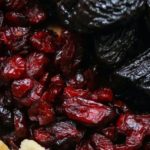
Agriculture provides us with essential food for life. Agriculture must be more productive and sustainable. Weather forecasting is a forecast of atmospheric conditions based on location and time. It can help to make a farmer’s business decisions. Accurate weather monitoring is essential to achieve healthy crops, increased productivity and profitability. Temperature matters a lot in this case for growing fresh fruits, vegetables and legumes. Technology developed and special weather forecasting mechanisms are available. Farmers can get all updates on a smartphone. Farmers know the basics, which allow them to use the features on the mobile.
The usefulness of weather forecasting:
It is possible to adapt the effects of adverse weather if a forecast of the expected weather can be obtained in time. Forecasts should ideally be used for small areas. Some aspects of weather forecasting for agriculture are quite distinct from synoptic weather forecasts. If we need clear weather for sowing, the storage of soil moisture should precede it in the sowing area. With well-organized weather systems, they can achieve the desired geographic delineation of the forecasts. They should show the region to which the climate estimate will be applied. Forecasting the weather event allows for proper planning of agricultural operations. It helps to decide whether to start or suspend the sowing operation. Whether to irrigate the crop, when to apply the fertilizer, and how to start or hold full harvest are the main areas where forecasting is essential.
The role of irrigation:
Irrigation is the artificial application of water to land for production and agriculture. Irrigation and crop growth requirements are affected by climate variability. Climate variability is something all farmers must react. They prolong the primary effects of the irrigation system over periods of dry conditions. So if it make their correct prediction, the chances of losses are much lower than expected. Drought can increase daily water use for crops for lower humidity and accompanied by higher temperatures. Managing in extreme conditions, irrigators must understand the water use patterns of daily and seasonal crops, and adopt practices and technologies that result in good crop production.
Pest control in agriculture:
Actual temperatures can go above and below averages from year to year. The results of non-occasional temperature changes and their likely negative impacts on have plants and bugs are notable. It is important to apply pest and disease control to protect the farm and crops from insects. Weather forecasts help farmers know when to apply pests and chemicals to avoid wasting crops. Reducing pests and applied chemicals is important to ensure global food security and reduced greenhouse gas emissions. The success of any farmer will depend on their ability to predict the weather and plan all their farming activities according to weather conditions.
Conclusion:
In the future, agriculture will require timely and accurate weather information to ensure continued success in the agricultural sector. Getting experts to make tailor-made weather forecasts is a little expensive, but it is beneficial for farmers in the long run. In the future, farmers will come to rely on satellite forecasts because of many advantages.





No comment yet, add your voice below!